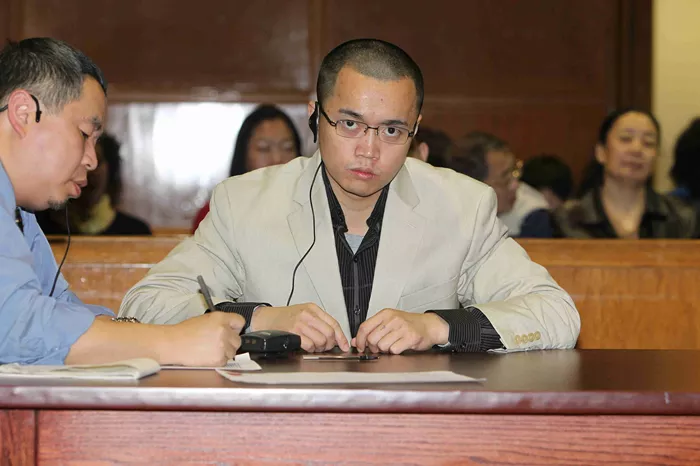Robert Roberson has spent over 20 years on death row, convicted of a crime he insists he did not commit. In 2003, he was sentenced for the death of his two-year-old daughter, Nikki. Doctors and an autopsy concluded she died from abuse, but Roberson and his legal team argue that her death was actually due to complications from pneumonia, not “shaken baby syndrome,” as prosecutors claimed.
Despite Roberson’s new evidence, prosecutors maintain that it does not disprove their case, asserting that Nikki died from injuries inflicted by her father.
As Roberson’s execution date of October 17 approaches, a diverse coalition is urging for clemency. This group includes 86 Texas lawmakers from both major parties, medical and scientific experts, autism advocates, lawyers, and even bestselling author John Grisham. Grisham commented, “In Robert’s case, there was no crime, yet we’re about to execute someone for it in Texas.”
In 2023, an appeals court ruled that there was insufficient evidence to overturn Roberson’s conviction, and the Supreme Court declined to hear his case. His final attempts to appeal have failed. The Texas Board of Pardons and Paroles has until October 15 to recommend clemency, which would require Governor Greg Abbott’s approval.
Democratic state representative Joe Moody stated, “We must do everything we can to prevent this from staining Texas justice for generations.”
Growing Concerns About Executions
Roberson’s case is part of a recent trend of high-profile death row cases gaining public attention. Maya Foa, director of Reprieve US, an anti-death penalty organization, described the current situation as an “execution spree.”
Last week, the Supreme Court considered whether to overturn Richard Glossip’s murder conviction. Glossip has been scheduled for execution in Oklahoma nine times and argues that prosecutors withheld crucial information about a key witness who lied during the trial. The court has already delayed his execution.
Conversely, last month, the Supreme Court declined to stop the execution of Marcellus Williams, a black man convicted of murdering a journalist in 1998. Doubts about his guilt have arisen, and the victim’s family opposed the execution. Williams was executed on September 24.
During the same week, four other men were executed, marking the highest execution rate since 2003. Robin Maher, executive director of the Death Penalty Information Center, called this an “unusual” number of executions. She stated, “This increase reflects the agendas of elected state officials, who are increasingly out of touch with the views of their constituents regarding the death penalty.”
Polls show that support for capital punishment has declined over the past 30 years. A recent Gallup poll indicated that only 53% of Americans still favor it.
If Roberson is executed on Thursday, it will be the 19th execution in 2024. The likelihood of being executed varies greatly by state; 23 states have abolished the death penalty, and 15 states have not executed anyone in at least five years. Last year, Texas, Oklahoma, Florida, Missouri, and Alabama were responsible for all 24 executions.
Shaken Baby Syndrome Under Scrutiny
If Roberson’s execution goes forward, he would be the first person in the U.S. executed for a “shaken baby syndrome” case. Medical experts previously used this term to describe brain injuries and deaths in children who were violently shaken or assaulted. However, the syndrome has faced criticism in recent years regarding its application in court cases.
In 2009, the American Academy of Pediatrics renamed shaken baby syndrome to “abusive head trauma.” Despite the name change, it remains the leading cause of fatal brain injuries in children under two. This diagnosis is typically made after finding evidence such as retinal hemorrhage, brain swelling, and bleeding in the brain.
While many in the medical community accept this diagnosis, a recent report emphasized the importance of exploring other possible causes before concluding that injuries resulted from abuse. A consensus statement from leading pediatric organizations posed the question, “Is there a medical cause to explain all the findings, or did this child suffer from inflicted injury?”
Roberson states that Nikki fell out of bed before her death. He says he comforted her and then went back to sleep, only to find her unresponsive when he woke up. He rushed her to the hospital, where doctors noted signs of brain death. She died the following day.
Medical staff suspected abuse immediately due to bruises on Nikki’s head and other symptoms. An autopsy concluded that she died from blunt-force head trauma and ruled her death a homicide.
Roberson’s lawyers argue that new evidence shows she had pneumonia that progressed to sepsis at the time of her death. They note that he took her to doctors repeatedly in the days leading up to her death and that she had been prescribed medications now known to pose serious risks for children. They believe these medications and her fall could explain the injuries found by doctors.
After his conviction, Roberson was diagnosed with autism, which his lawyers claim affected how he reacted to the situation, leading police to misinterpret his emotional state.
Brian Wharton, the lead detective in Roberson’s case who testified against him, is now advocating for clemency. He wrote, “I will forever be haunted by the role I played in helping the state put this innocent man on death row. Robert’s case will forever be a burden on my heart and soul.”
You Might Be Interested In


